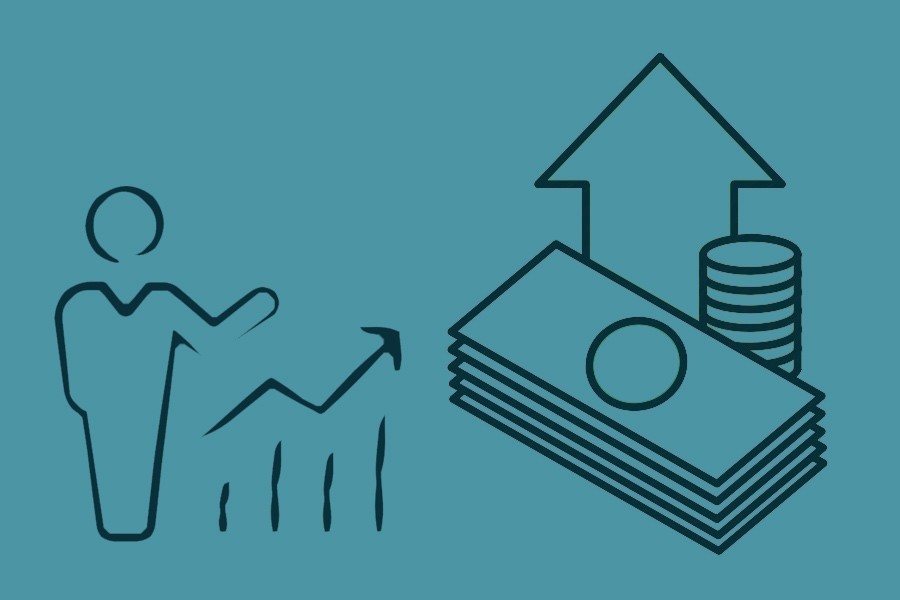Bangladesh's incredible economic growth performance is well known. Annual growth rate of gross domestic product (GDP) per capita at constant 2005 prices increased from 2.96 per cent in 1997 to 6.06 per cent in 2017. Small changes in the annual growth of GDP per capita can have significant impacts in the long run. For example, using simple methods of approximation such as the rules of 69.3, 70, or 72, which are used for estimating investment's doubling time, it can be shown that GDP per capita will take around 24 years to double if the growth rate is 2.96 per cent, but only 12 years if the growth rate is 6.06 per cent. Due to the far-reaching socio-economic impacts of economic growth, there is a curiosity among the general public about the growth of an economy.
The genesis of economic growth theory can be found in the work of Adam Smith, the father of economics. Smith advocated that it was division of labour that started the growth process by igniting the spark of increased productivity which led to greater output. As more output was produced, per capita income increased, and there was a rise in capital accumulation which ultimately kept the growth process going.
Other economists, such as David Ricardo, and Thomas Malthus, and, much later, Frank Ramsey, Allyn Young, Frank Knight, and Joseph Schumpeter, provided many of the basic ingredients that appear in modern theories of economic growth. These ideas include the basic approaches of competitive behavior and equilibrium dynamics, the role of diminishing returns and their relation to the accumulation of physical and human capital, the interplay between per capita income and the growth rate of population, the effects of technological progress, and the influence of monopoly power as an incentive for technological advancement.
Right after the great depression, Roy F. Harrod and Evsey Domar proposed a model of economic growth where increased savings and investment decreased the capital-output ratio resulting in increased productivity and increased growth. However, the Harrod-Domar model used a fixed coefficient production function with no substitutability between capital and labour which meant that the inherently unstable steady state of the model was characterised by parameters which were all exogenously determined. Thus, in the Harrod-Domar model it was as difficult for an economy to reach and maintain steady state growth as it was to balance an object on the edge of a knife.
The Solow model solved the knife edge problem of the Harrod-Domar model by allowing for a variable capital-output ratio. Introducing the neoclassical production function with the possibility of substitution between capital and labour inputs gave a way to vary the capital-output ratio as the growth proceeded. Moreover, the assumption of diminishing returns to each input gave rise to two important implications of the Solow model. Firstly, the model predicted conditional convergence. This meant that the lower the starting level of per capita GDP, relative to the long-run or steady state position, the faster would be the growth rate. Secondly, it also prophesised that in the absence of continuing improvements in technology, per capita GDP growth must eventually cease.
After these important contributions from Robert Solow, David Cass and Tjalling Koopmans brought Frank P. Ramsey's analysis of consumer optimisation into the Solow model and thereby provided for an endogenous determination of the saving rate. In the Ramsey-Cass-Koopmans model, the savings rate was determined by optimising households interacting in competitive markets trying to choose consumption and saving that would maximise their utility over an infinite horizon, subject to an inter-temporal budget constraint.
Beyond the work of Cass and Koopmans, growth models featuring learning by doing and research and development became popular. However, the emphasis gradually moved away from models where the long-term per capita growth rate was pegged by the rate of exogenous technological progress. Thus endogenous growth models emerged, where the growth rates were determined within the models themselves. The recent theories of endogenous growth focus on the roles of increasing returns, research and development activity, human capital, and the diffusion of technology.
The economy of Bangladesh has been growing at more than 6.0 per cent annually since 2011. The growth rate fell below 5.0 per cent in 1999, in the aftermath of the floods in 1998 and the cyclone in 1999. Growth also plummeted in 2002, right after the attack on the Twin Towers of the World Trade Centre in New York on 11 September 2001. During the years 2006-08 and 2014, economic growth was affected by political instability, whereas in 2011-12 the slowdown was caused partly due to the balance of payments crisis. These setbacks have mostly shaken, but not stirred, Bangladesh's economy, as the data show that economic growth has quickly recovered in most cases and continued on its upward trajectory.
Economic growth in Bangladesh has been above 7.0 per cent annually both in 2017 and 2018, and a number of studies have shown that the Bangladesh economy is expected to grow at around 9.0 to 10 per cent annually in 2030. These growth rates, however, fail to reflect how the benefits of growth will be shared. And ultimately, economic growth is necessary, but not sufficient for economic development.
The author is a Research Associate at the Centre for Policy Dialogue (CPD). [email protected]


